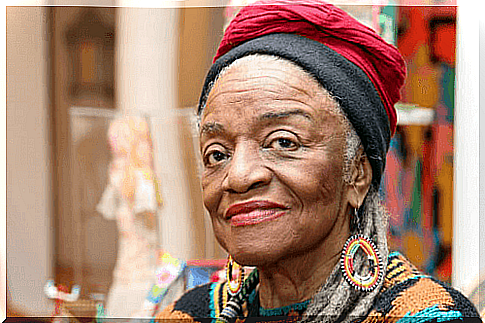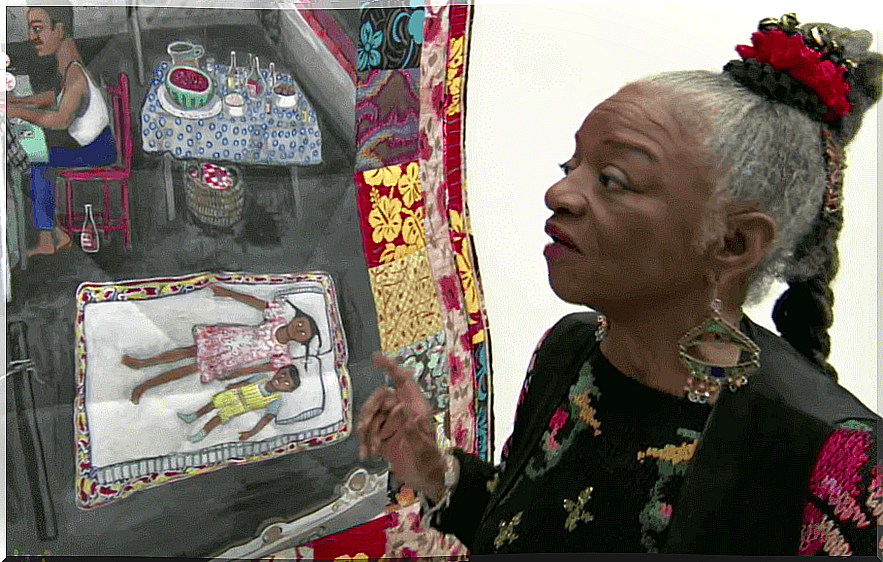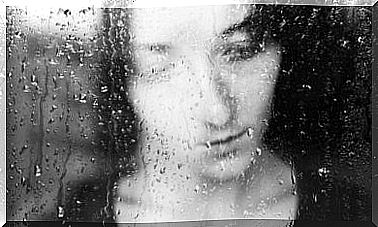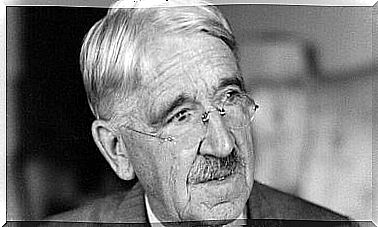Faith Ringgold, The Woman Who Embraced Her Destiny

Faith Ringgold is an American artist known for her particular art form. Among her most important productions are the soft sculptures and those she called “story quilts”, real canvases in which she tells a story.
Art and activism have always gone hand in hand with Faith Ringgold . His art is in fact a direct attack against prejudices; a real political statement that often takes advantage of the shock caused by racist insults.
His works highlight the ethnic tension, political discontent and racism of the 1960s. His works provide us with a precise vision of the perception that white culture had towards the African American community.
The idea of quilts has its roots in the slave culture of the southern United States at the time of the Civil War. Faith Ringgold has taken up the traditional work that slaves were in charge of, reinterpreting its function to tell the stories of her life and those of many others belonging to the black community.
Faith Ringgold’s childhood and youth
Faith Ringgold was born under the name of Faith Willie Jones on October 8, 1930 in the city of New York. His father, Louis Jones, drove trucks, while his mother, Willi Posey Jones, worked as a fashion designer. The money the parents managed to earn on their salaries was barely enough to feed their three children.
Faith Ringgold was unable to attend elementary school regularly due to her health problems. Being asthmatic, she will spend most of her childhood between home and hospitals. It was in this phase of her life that, at a very young age, her love for drawing matured. Later he decides to study art at the City College of New York.

In 1950 she married Robert Earl Wallace, a jazz pianist with whom she ends up divorcing six years later. From the marriage with Wallace two daughters are born, Barbara and Michele. Faith remarried a few years later, on May 19, 1962, to Burdette Ringgold.
After graduating from the 1960s and 1970s, Faith worked as an art professor at City College, Wagner College and Bank Street College of Education.
First plastic works
At the beginning of the 70s, Faith Ringgold abandons traditional painting to devote herself to acrylic on canvas with “exuberant” edges similar to Tibetan thangkas .
She also works with her mother on masks made with fabric, beads and raffia. These masks date back to the African tribal tradition and are still considered his first real works.
Also with the help of her mother, Faith begins the production of life-size portraits of famous people such as Adam Clayton Powell, Wilt Chamberlain, basketball players and other personalities from Harlem, a neighborhood of New York. Precisely for this reason this production is known as The Harlem series.
At the same time, Faith promotes African art within the university environment. In his classes, jewels, garments and beads of African origin are designed.
The political theme in the works of Faith Ringgold
Faith Ringgold feels deeply drawn to political issues, especially those concerning the exploitation of women. Political interest also stimulated thanks to the influence of the Movement for Civil Rights which in those years was in strong growth. The artist manages to convey the sufferings of a community through his art; of which she herself was a victim.
Ringgold manages to give great visibility to the theme of social injustice through the paintings she creates in the 1960s. Among his most famous works, we remember American People and The Flag is Bleeding .
His work is mainly inspired by the works of writers James Baldwin and Amiri Baraka, both authors of texts on the subject of discrimination and the fight against black people in the United States.
The quilts of stories
Faith expands the fields of application of the fine arts by making sewing, fabric and canvas composition elements of common use in the artistic world. She was the first artist to challenge these limits and elevate the art of fabric making it common practice.
The concept behind quilts stems from the art of fabric introduced to the United States by African slaves. They used the quilts not only to warm themselves, but also to preserve their memory. The quilts in fact functioned as real “message bearers”.
Faith tried to promote female craftsmanship through this art form. In his story quilts he shows a series of images, with an attached description, useful for telling a story.
Echoes of Harlem is the first of over 30 quilts he has worked on since 1980. Each tells a story according to the structure of children’s stories, each section of the quilt corresponds to a page.
One of the most famous story quilts is Tar Beach, where you can appreciate the representation of a family gathered in their home on a warm winter night. In this work, adults chat while children play and sleep wrapped in their blankets. The daughter dreams of flying free over every barrier, in a scene featuring the George Washington Bridge in the background.
Other very popular Faith Ringgold story quilts are Who’s Afraid of Aunt Jemima? , which chronicles the life of an African woman who became a successful business woman, and Street Story Quilt .
Despite having lived in New York, his work has always been conceptually very distant from American contemporary art. This is because the topics she deals with are exclusively black culture and racial discrimination. It is therefore not difficult to understand why she was never interested in entering the artistic circles of the time, conservative and elitist.

Social commitment and awards
Faith is also known, as already mentioned, for the strong social activism that sees her fighting for the rights of African artists in the Whitney Museum of American Art in New York.
Her struggle finds concreteness in the activities of the Ad Hoc Committee of Women Artists, founded by artist Poppy Johnson and art critic Lucy Lippard. As a social activist, Faith uses art to found and grow organizations like Where we At, which supports African American artists.
His foundation, Anyone Can Fly, is totally dedicated to an artistic expansion that also includes African artists. This foundation also takes care of introducing the great masters of Afro-American art to children and adults.
Faith’s more recent works embrace the theme of prejudice in a different way; no longer through the use of images that compare the different lifestyles of ethnic groups, but by proposing young African Americans as positive models.
Faith Ringgold became the first black woman to exhibit alone at The Spectrum Gallery in New York in 1967 and 1970. Her achievements as an artist, teacher and activist have been recognized around the world. Its showcase has nearly 75 awards, including the Honorary Doctorate of Fine Arts.









